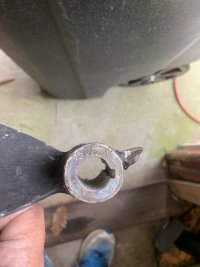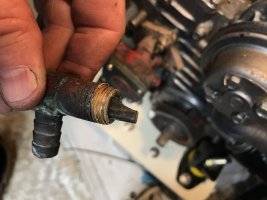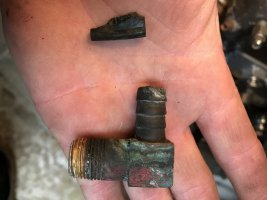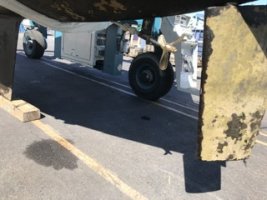I noticed an overheating situation late last summer.
· Universal M18 Diesel, 14HP
· Campbell Sailor 3 blade 13RH P7-
· All new cooling/exhaust system hoses and exhaust mixing elbow 2 years ago
· Oversized aftermarket heat exchanger, boiled clean 2 years ago
· Oberdorfer water pump that moves water through the system just fine with fresh impeller and no airlocks
· Surface Water Temperature 80 degrees F
· Tachometer accuracy verified with handheld tach
· Cruising RPM 2200 temperature stays around 180
· Max RPM achievable under power 2600 (should be 3200 as per engine spec) and engine temp climbs to 200+. No smoke or steam.
During the purchase process there was quite a bit of confusion about the actual RPM's as measured by the mechanic (I always thought it was low at max throttle, mechanic thought it was OK even after I convinced him to revisit the boat with a handheld tachometer ). I also noticed that the boat moves really quickly at idle and requires lots of shifting in and out of gear. All this lead me to believe the boat was overpropped and the warm river water of late summer caused overheating at load. The boat's former life was in the Salish Sea with cold water temps and the situation probably never manifested itself. I called West by North to ask about re-pitching the current prop. Kelsey seemed to think that the Campbell Sailor 13x7 was too big for the boat (even though that is what West by North recommended 17 years ago) and recommended a 12x7. The new Campbell Sailor prop arrived this week. Unfortunately installation (and all other boat projects) will have to wait. I sure hope this is the solution!
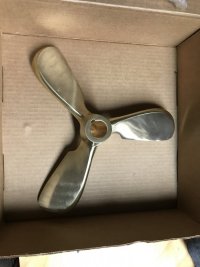
· Universal M18 Diesel, 14HP
· Campbell Sailor 3 blade 13RH P7-
· All new cooling/exhaust system hoses and exhaust mixing elbow 2 years ago
· Oversized aftermarket heat exchanger, boiled clean 2 years ago
· Oberdorfer water pump that moves water through the system just fine with fresh impeller and no airlocks
· Surface Water Temperature 80 degrees F
· Tachometer accuracy verified with handheld tach
· Cruising RPM 2200 temperature stays around 180
· Max RPM achievable under power 2600 (should be 3200 as per engine spec) and engine temp climbs to 200+. No smoke or steam.
During the purchase process there was quite a bit of confusion about the actual RPM's as measured by the mechanic (I always thought it was low at max throttle, mechanic thought it was OK even after I convinced him to revisit the boat with a handheld tachometer ). I also noticed that the boat moves really quickly at idle and requires lots of shifting in and out of gear. All this lead me to believe the boat was overpropped and the warm river water of late summer caused overheating at load. The boat's former life was in the Salish Sea with cold water temps and the situation probably never manifested itself. I called West by North to ask about re-pitching the current prop. Kelsey seemed to think that the Campbell Sailor 13x7 was too big for the boat (even though that is what West by North recommended 17 years ago) and recommended a 12x7. The new Campbell Sailor prop arrived this week. Unfortunately installation (and all other boat projects) will have to wait. I sure hope this is the solution!



